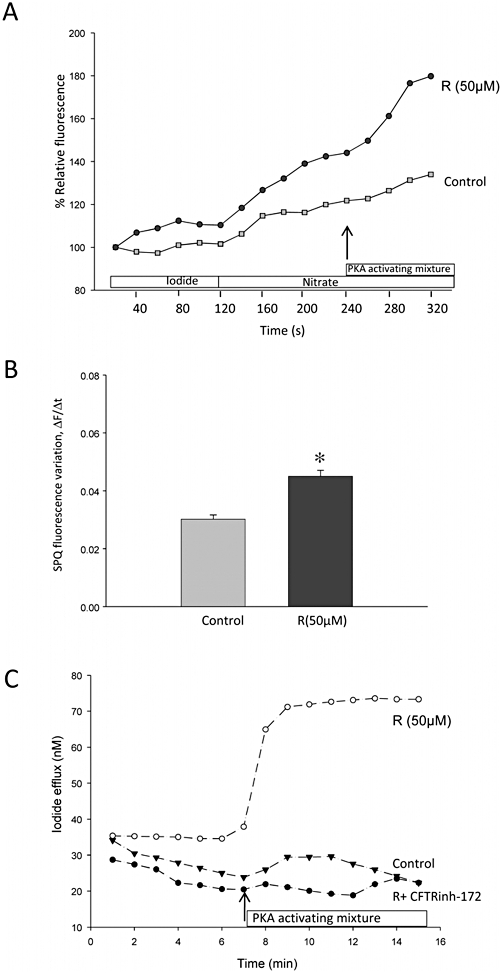Figure 5.

Activation of a cAMP-dependent halide efflux in resveratrol-treated CFPAC1 cells. (A) Representative changes in SPQ relative fluorescence as a function of time monitored in a resveratrol pretreated cell (R, 50 µM, 18 h, circles) or a control CFPAC1 cell (squares). Changing the superfusate from an iodide- to a nitrate-containing solution (as indicated by the bars) induced in both cells a slight increase in fluorescence intensity, denoting a basal finite anionic permeability. In the presence of a PKA activating mixture (indicated by arrow), an abrupt change in fluorescence intensity was observed in the resveratrol-treated cell, consistent with the activation of a cAMP-dependent halide efflux. (B) The change in fluorescence intensity as a function of time (ΔF/Δt) following superfusion of the PKA-stimulating mixture (forskolin, IBMX and pCPT-cAMP) in control (DMSO-treated, n = 58 cells) or resveratrol-treated cells (R, n = 66 cells) from three independent experiments. Results are given as means ± SEM The significance of difference was analysed using unpaired Student's t-test. *P < 0.05. (C) Representative changes in iodide efflux as a function of time measured by an iodide-selective electrode. As in (A), the addition of the stimulating mixture is indicated by arrow. Data shown are from control cells, cells treated with resveratrol (50 µM, 18 h) and cells treated with resveratrol (50 µM, 18 h) in the presence of CFTRinh-172 (20 µM). CFPAC1, cystic fibrosis pancreatic adenocarcinoma; IBMX, isobutyl methylxanthine; PKA, protein kinase A; SPQ, 6-methoxy-N-(-sulphopropyl)quinolinium.
